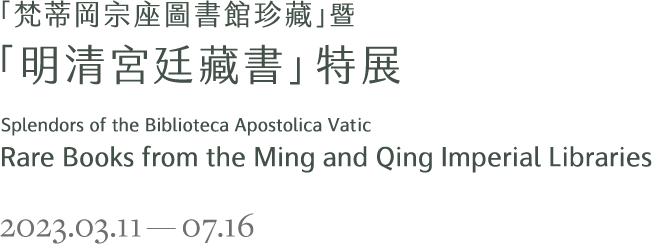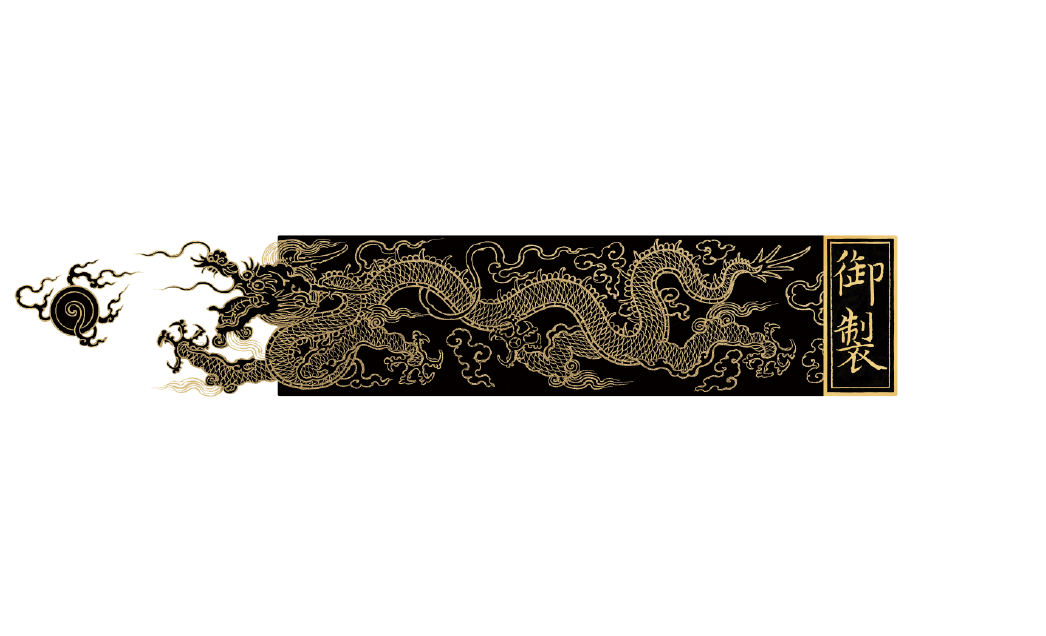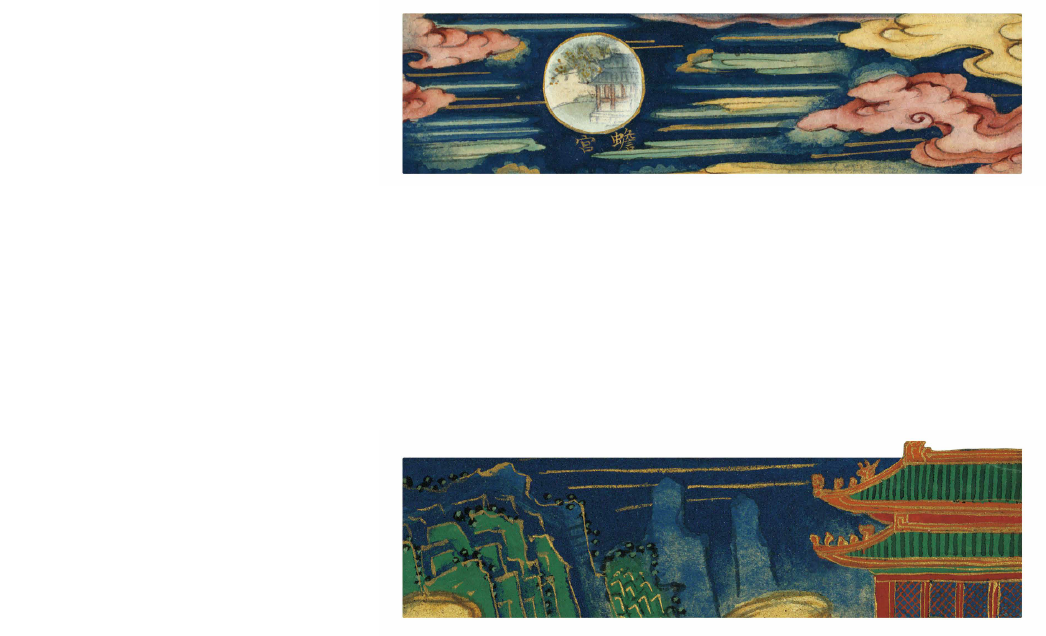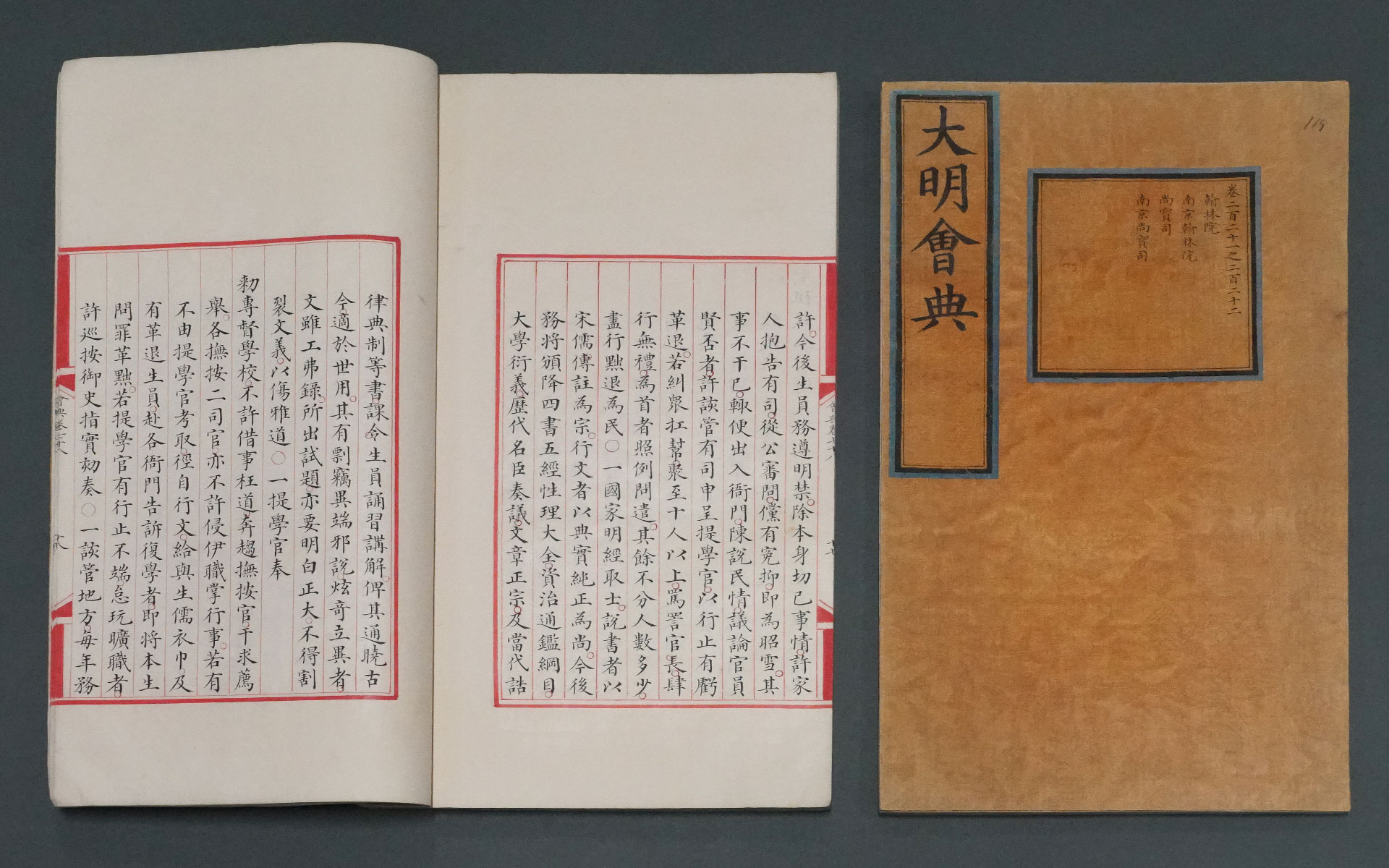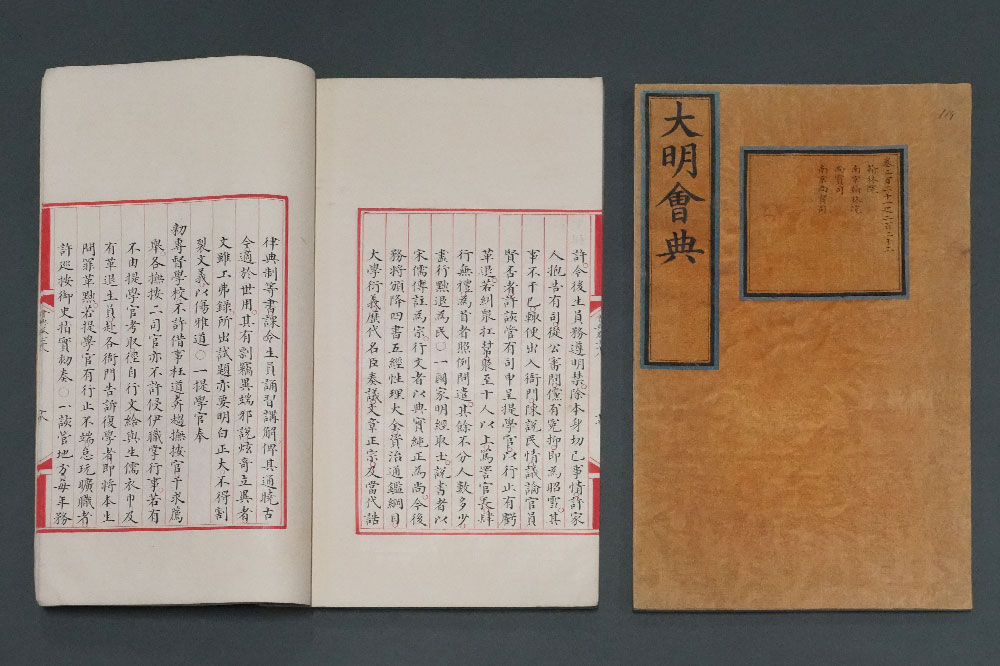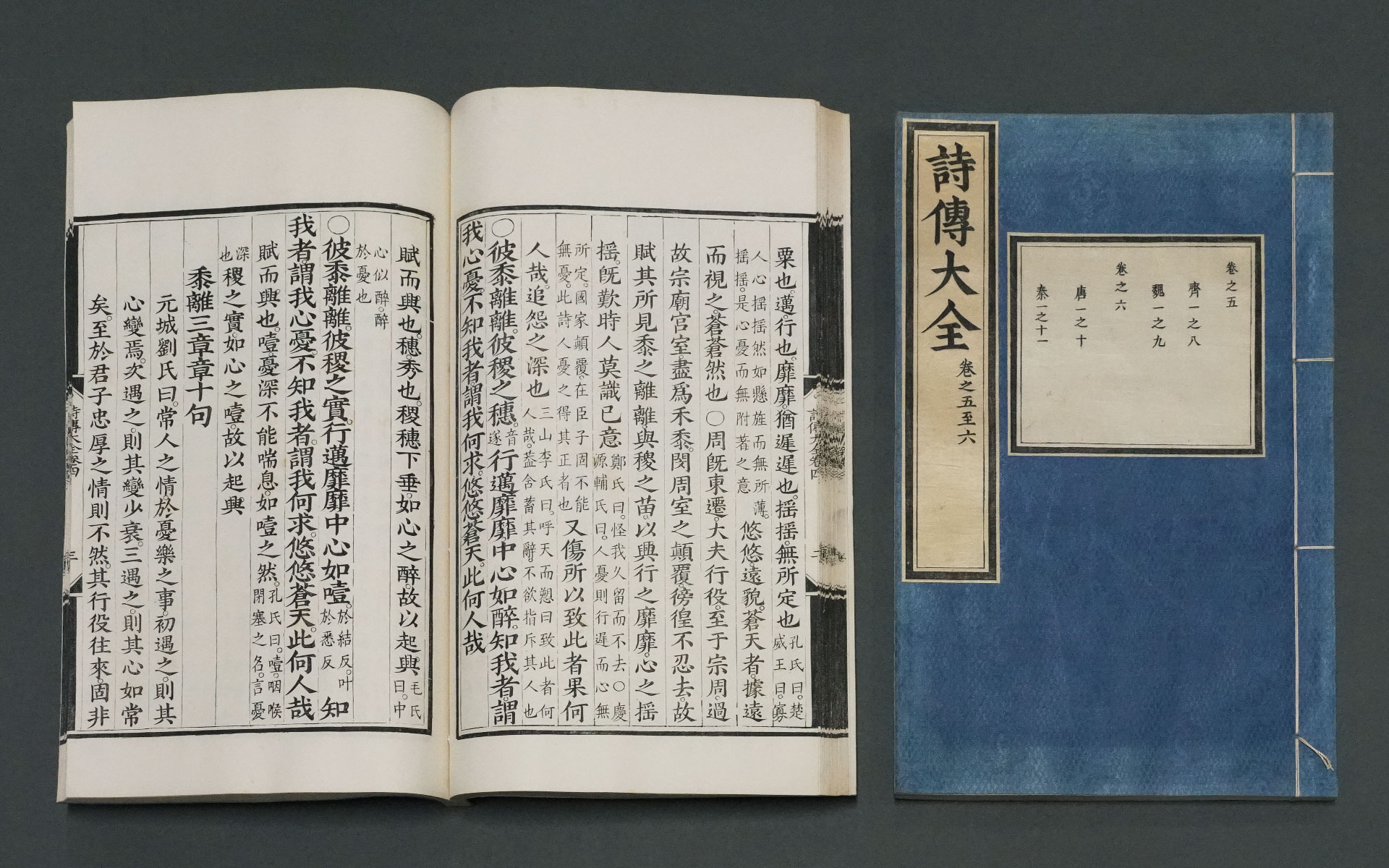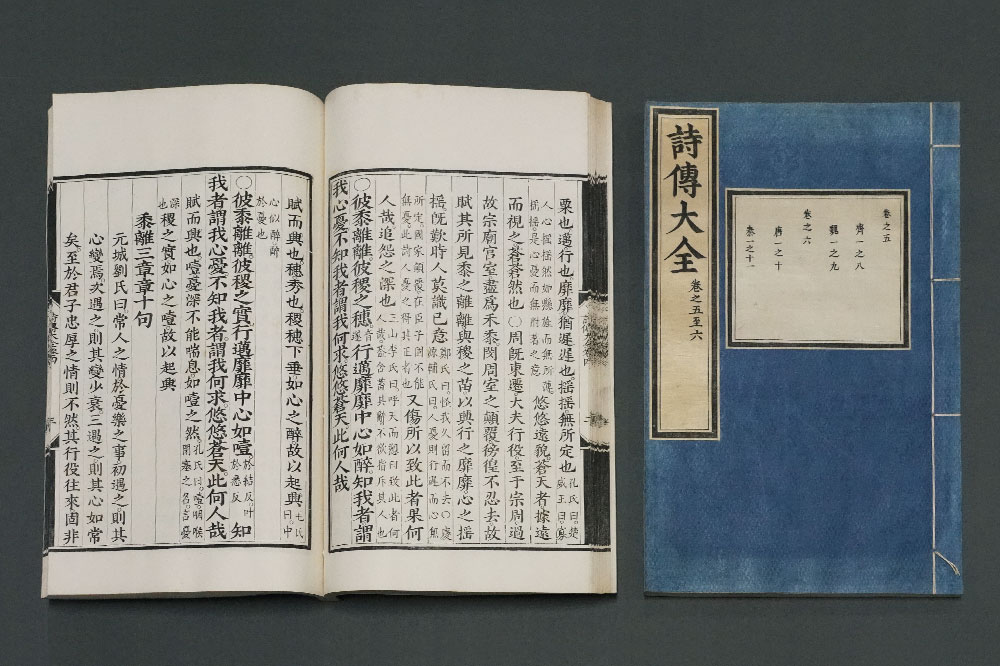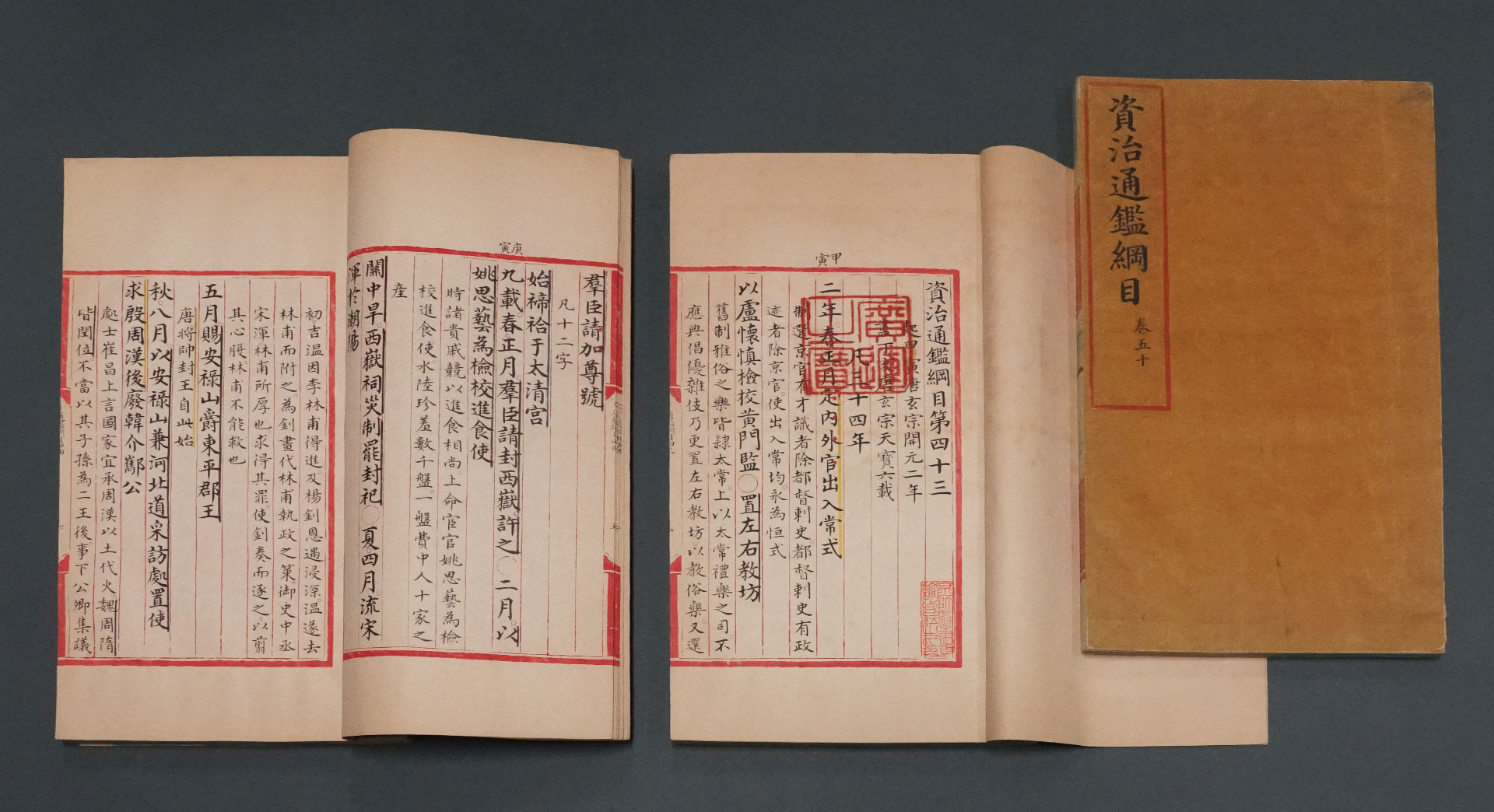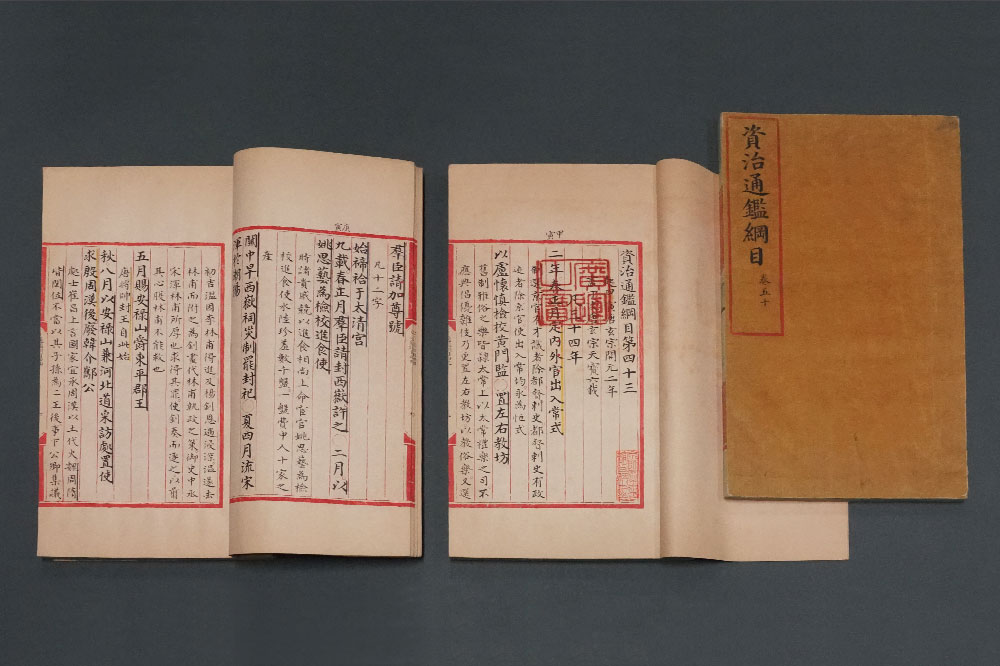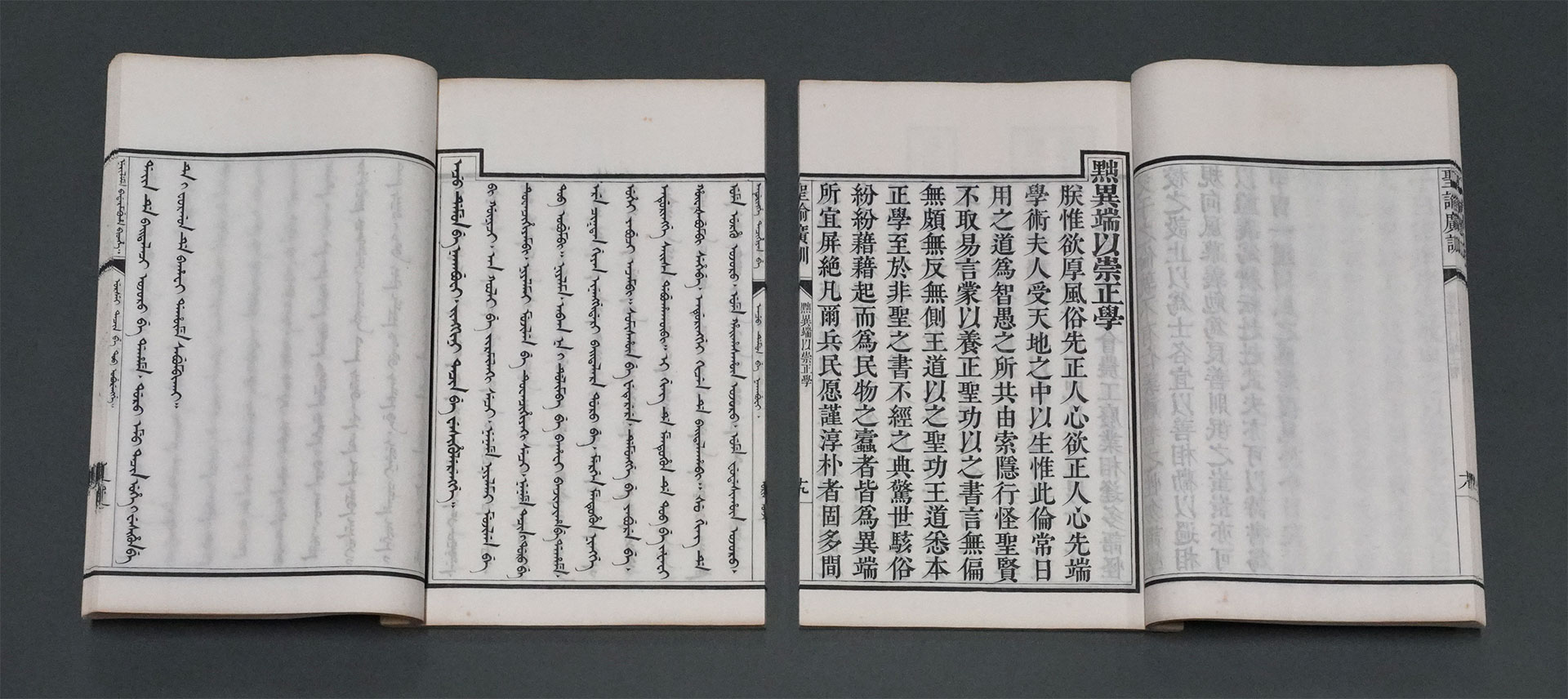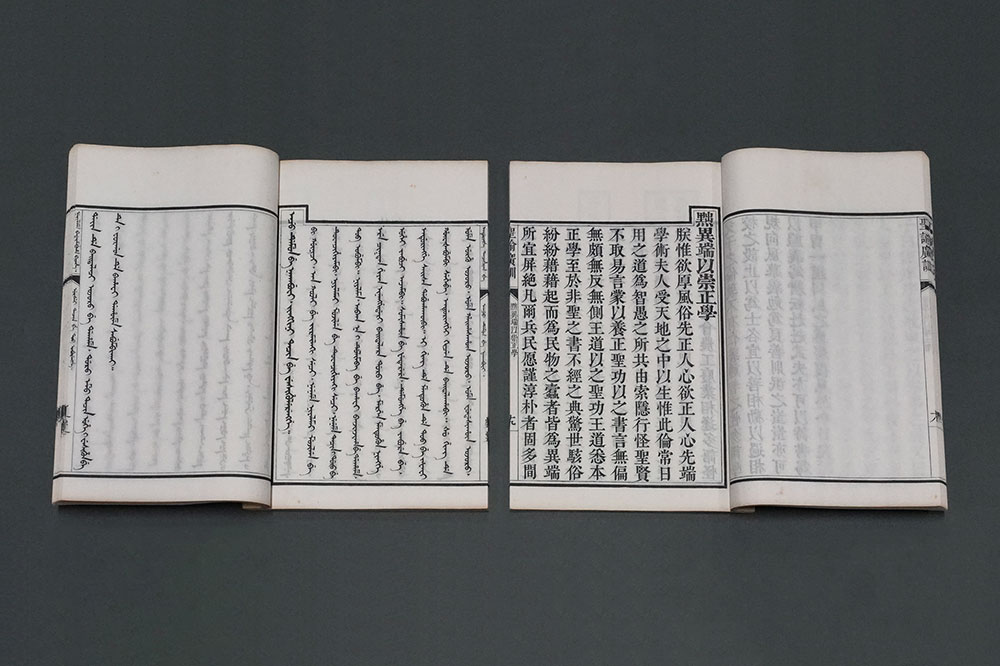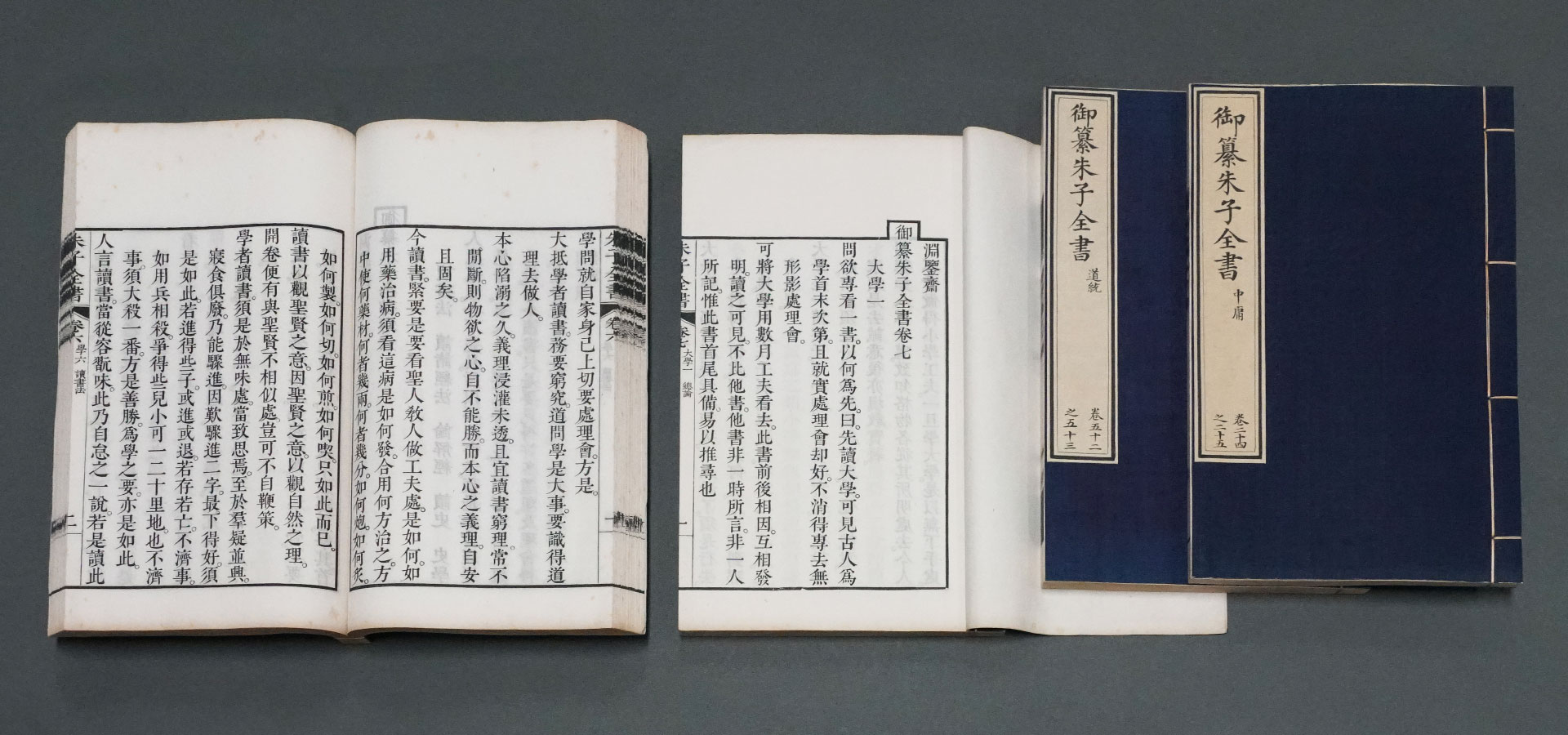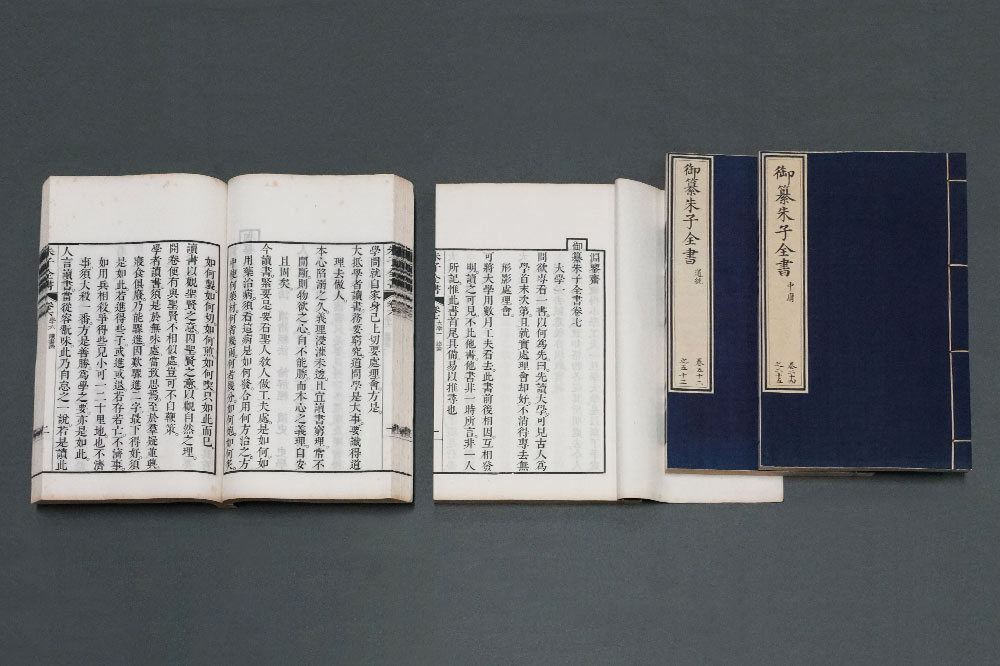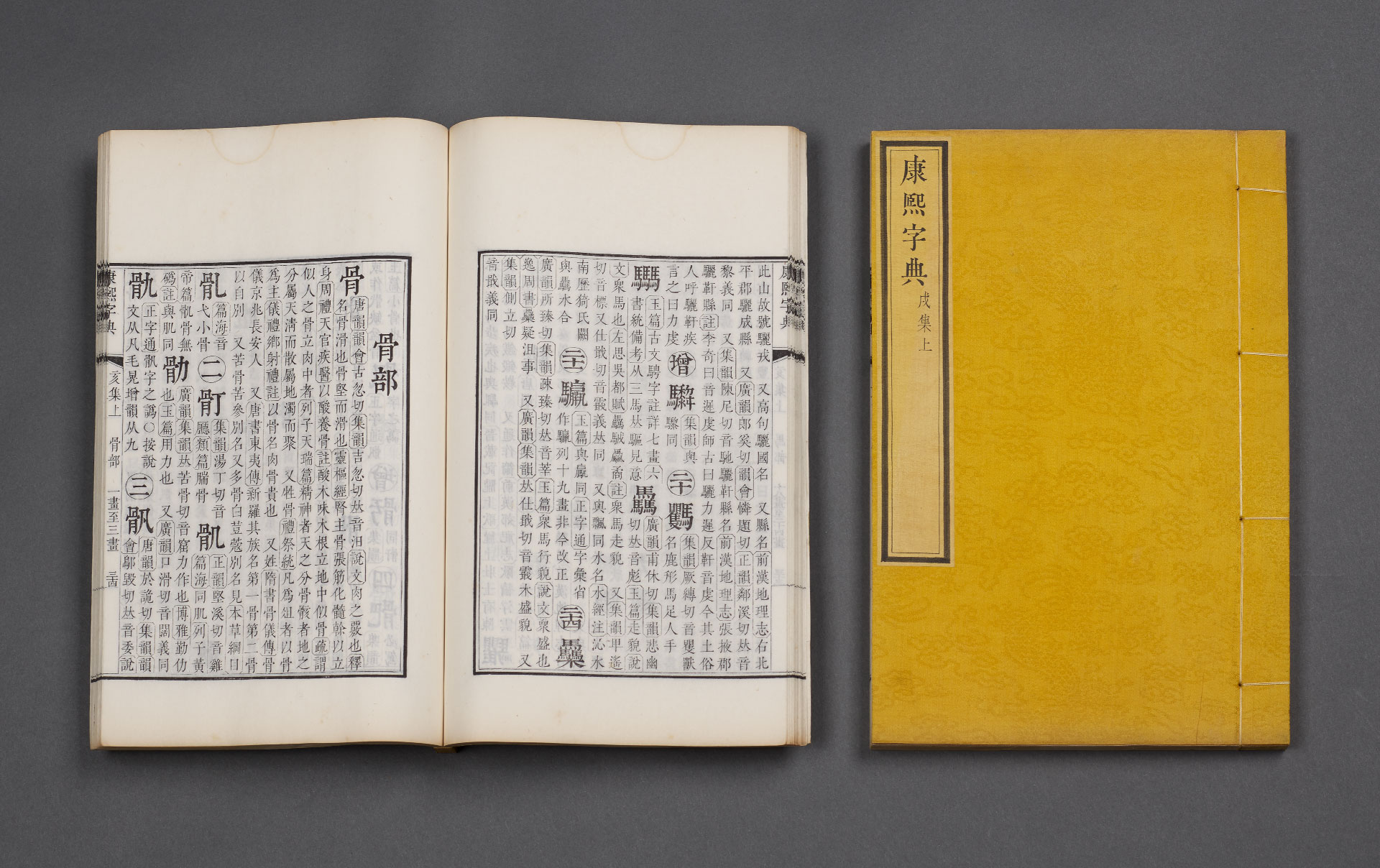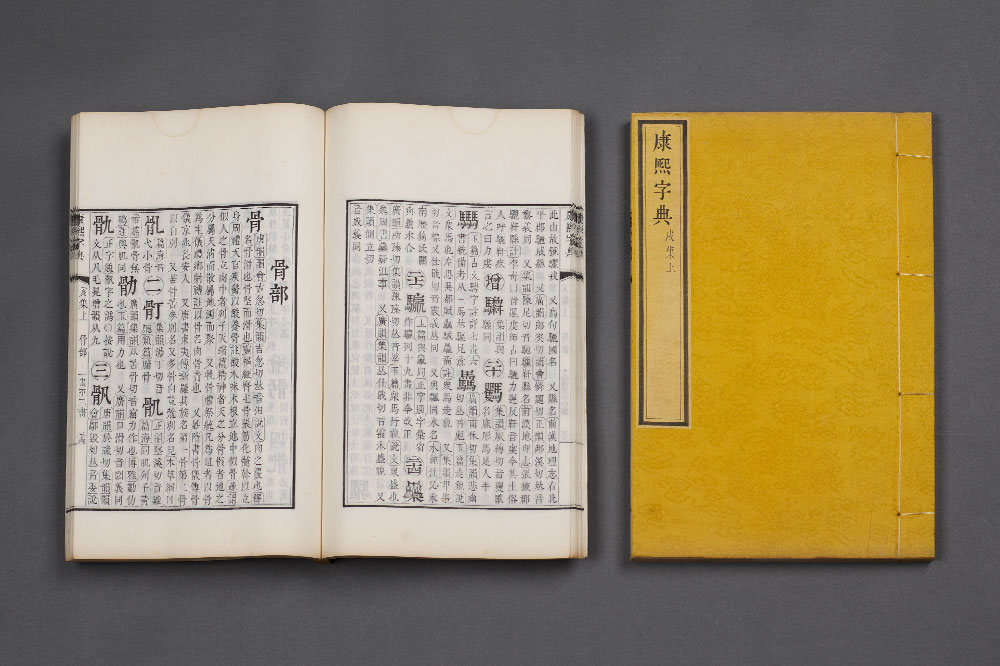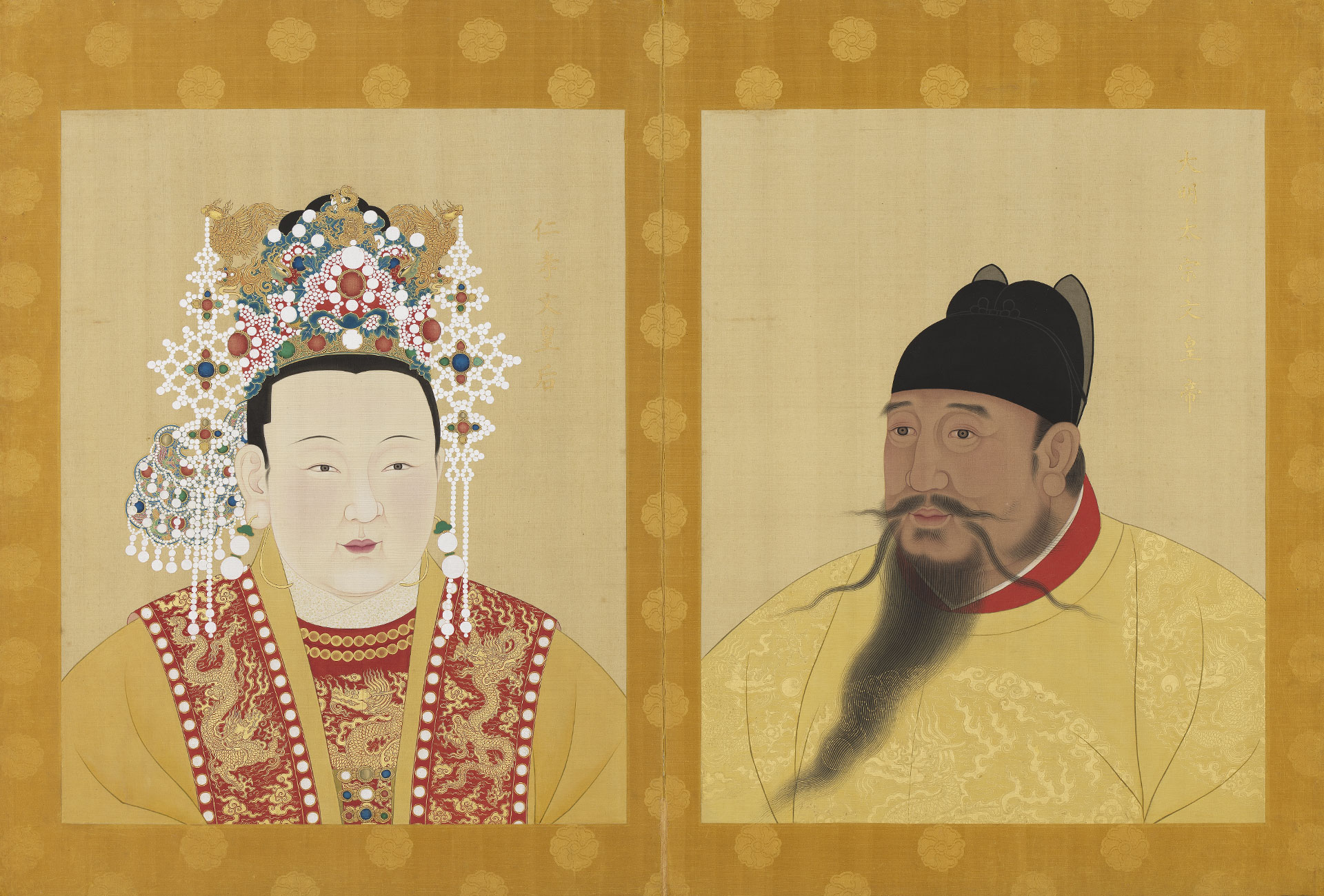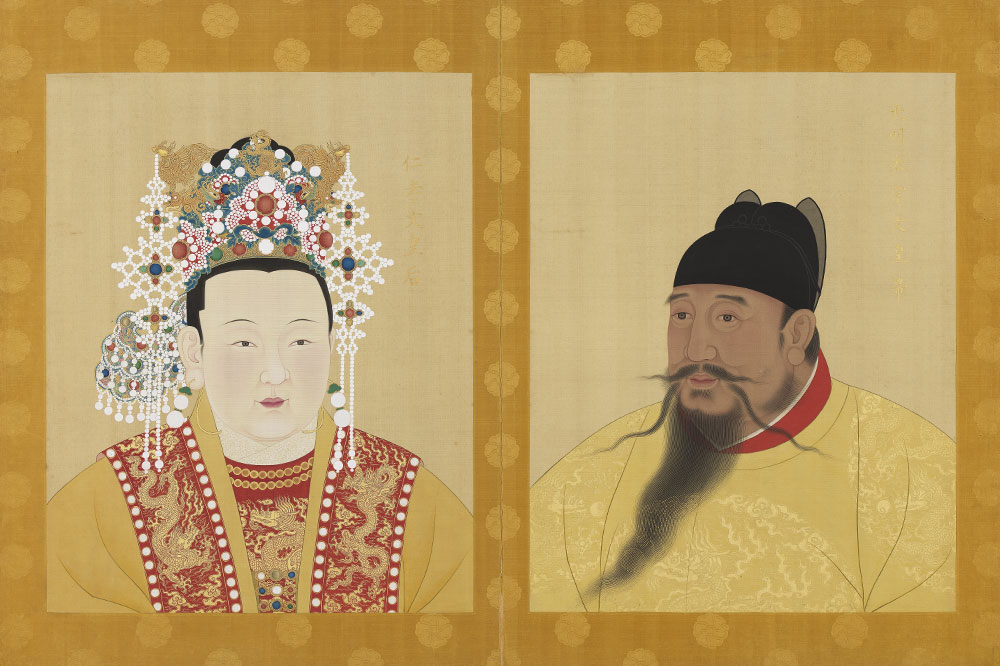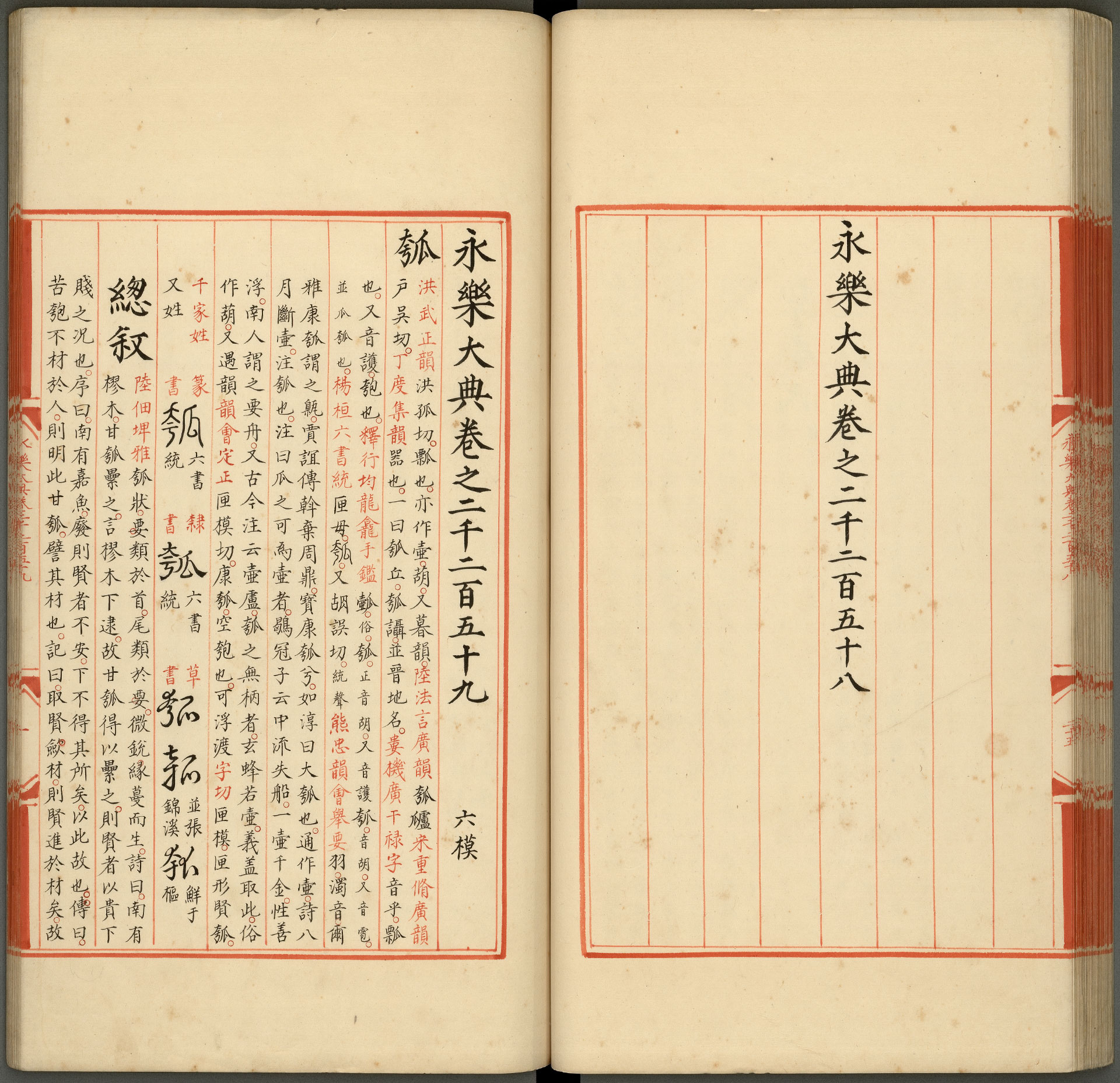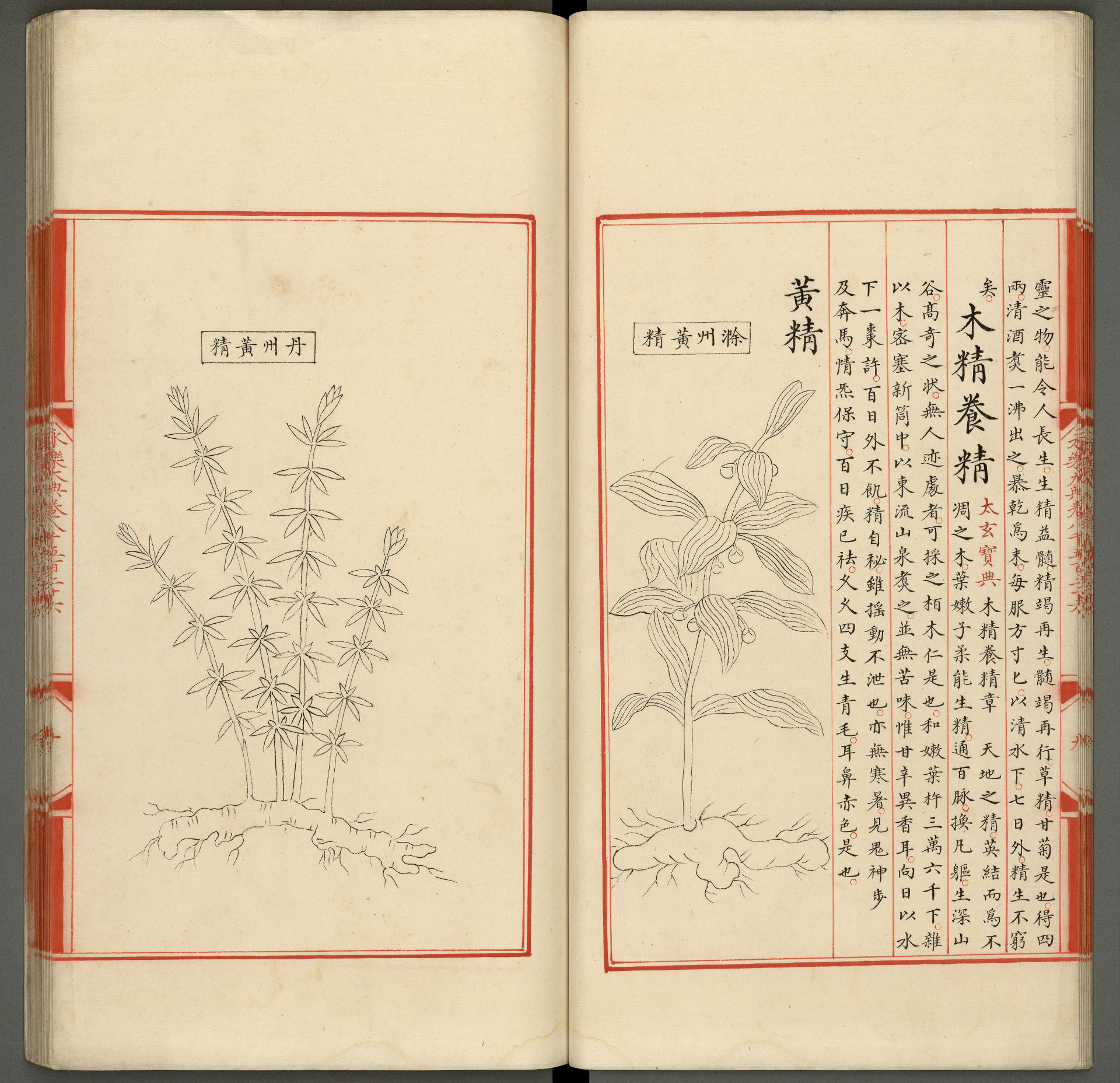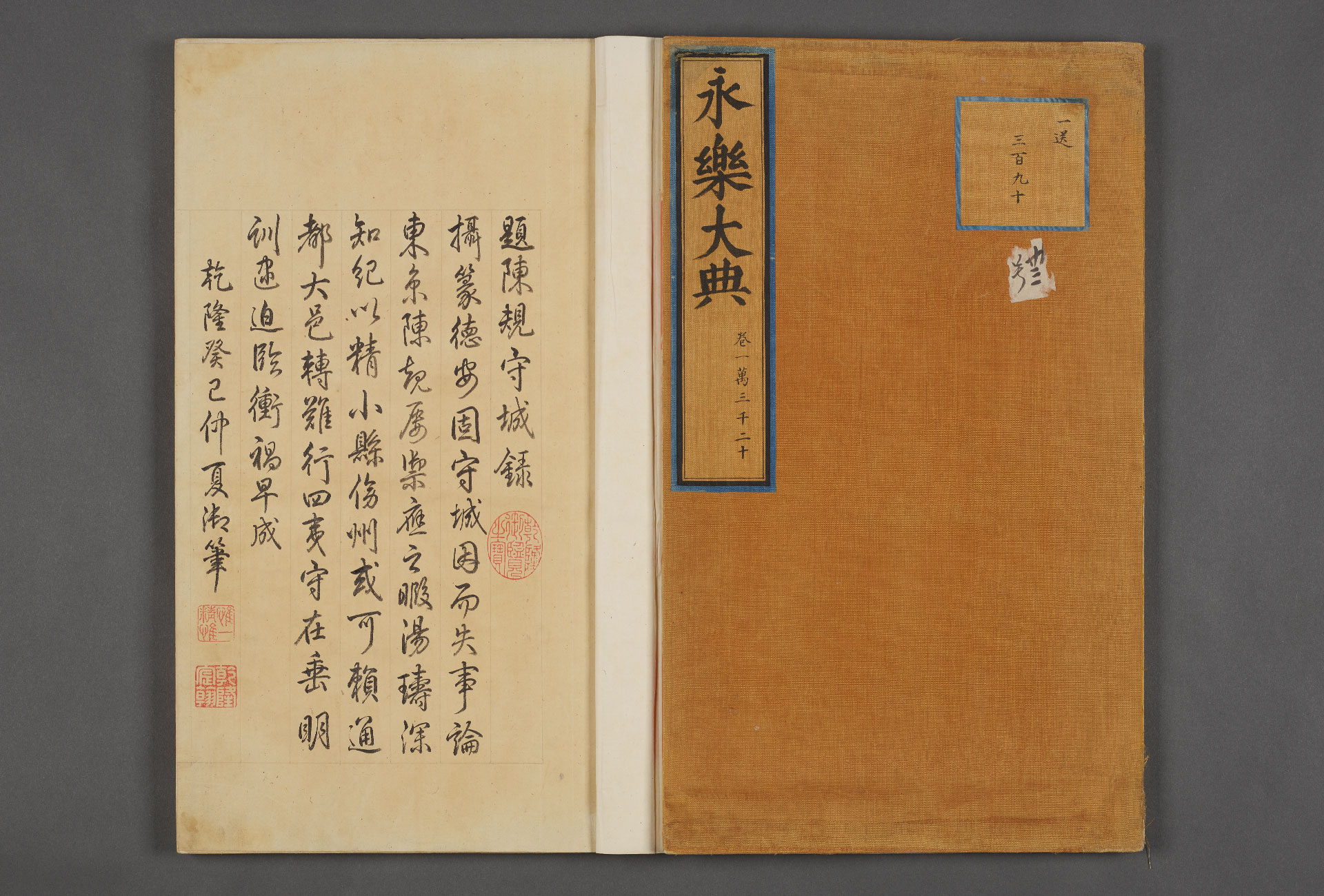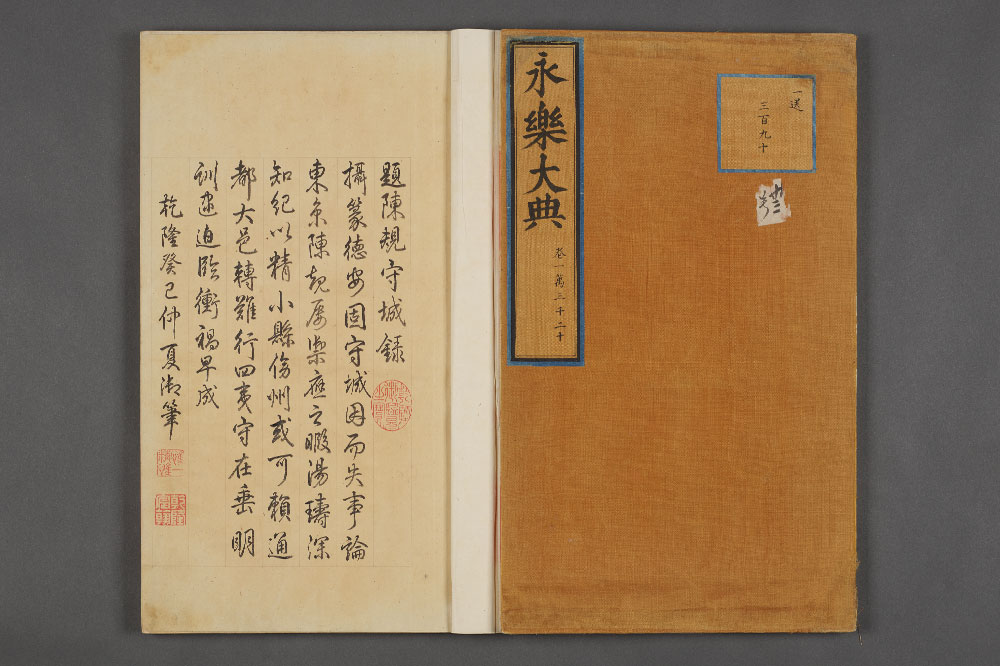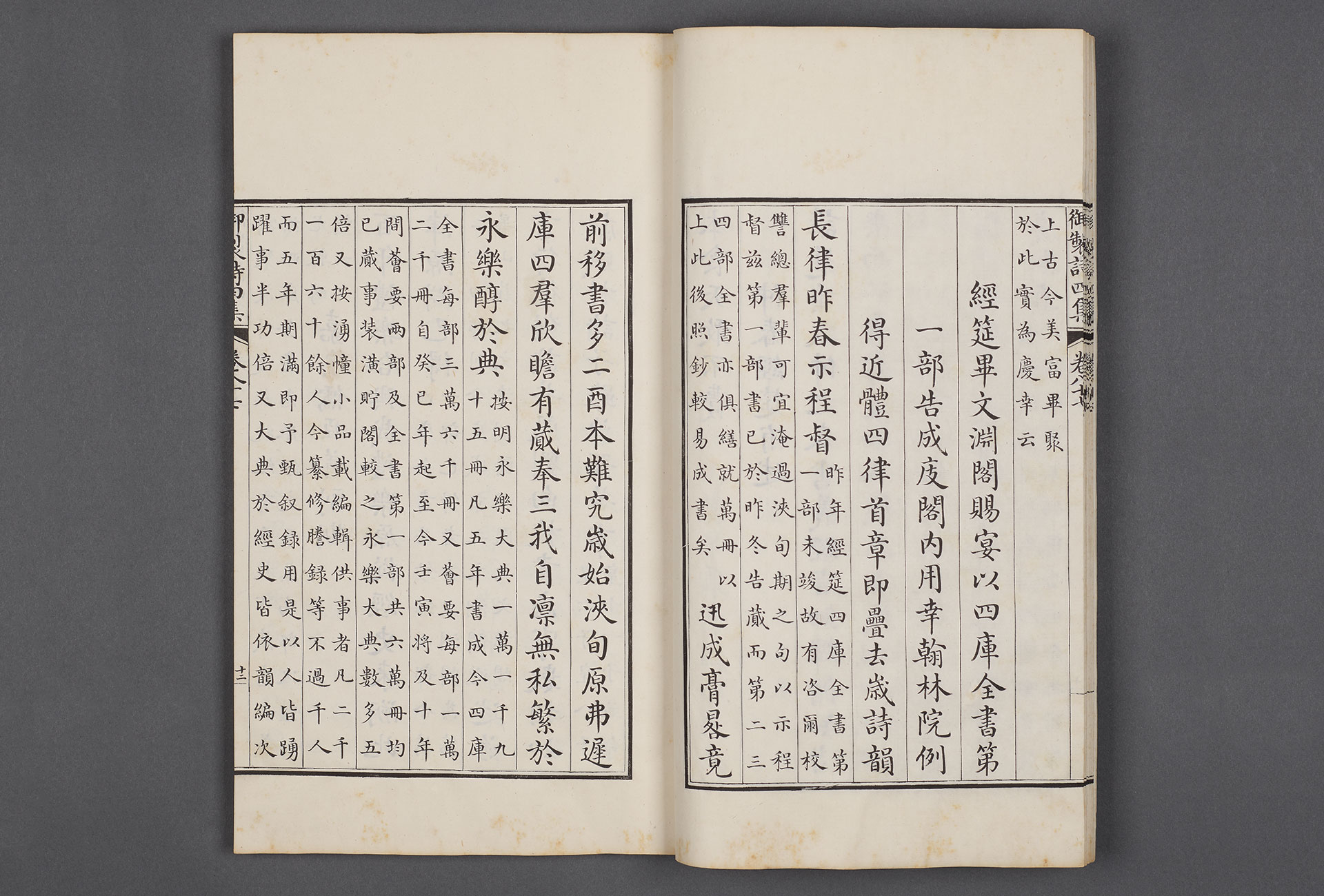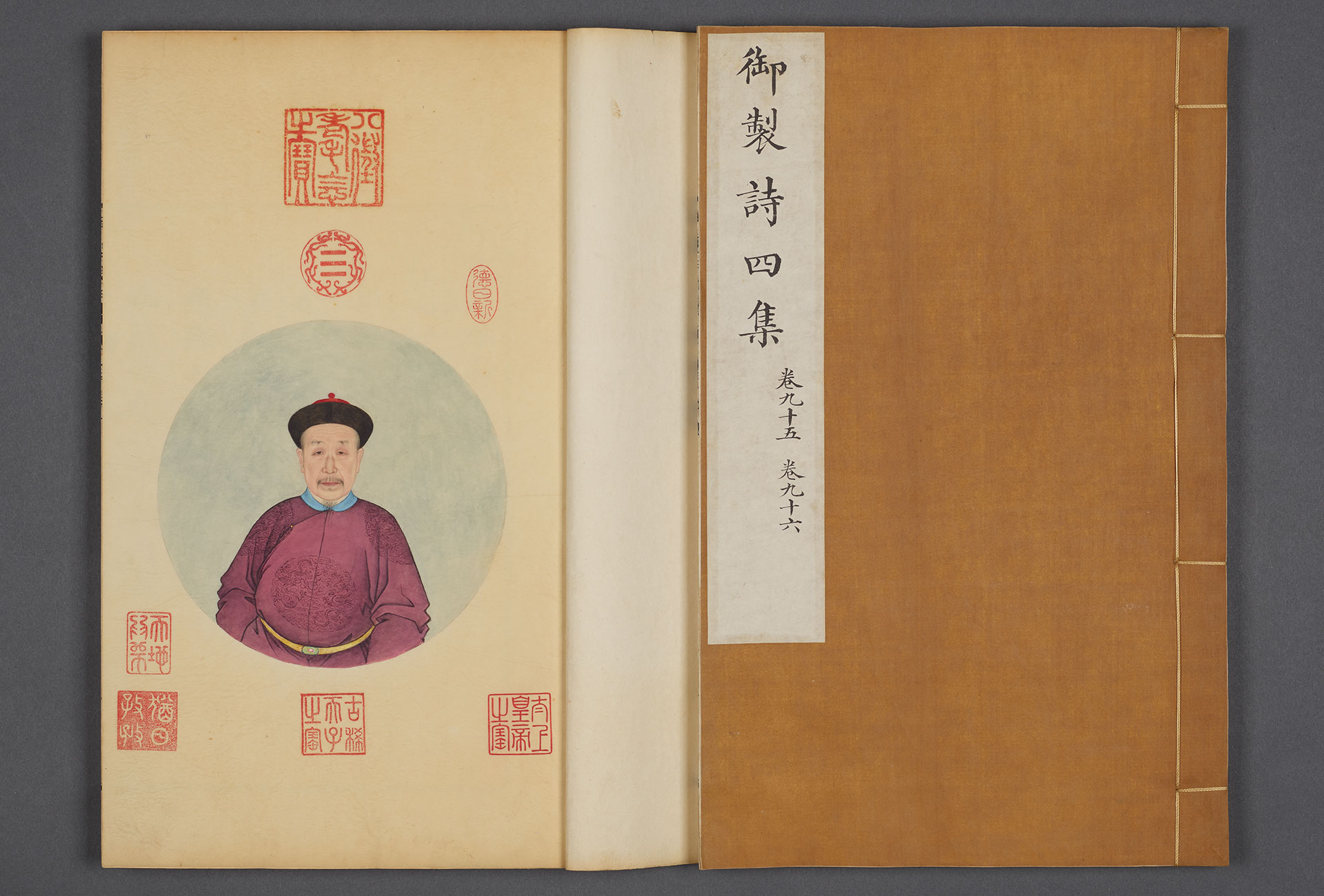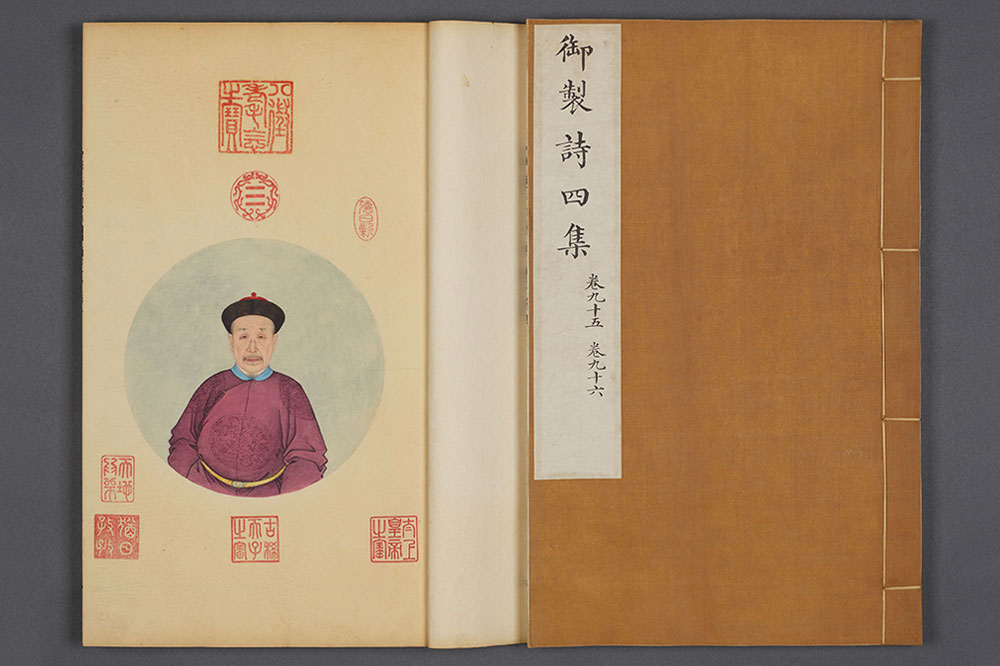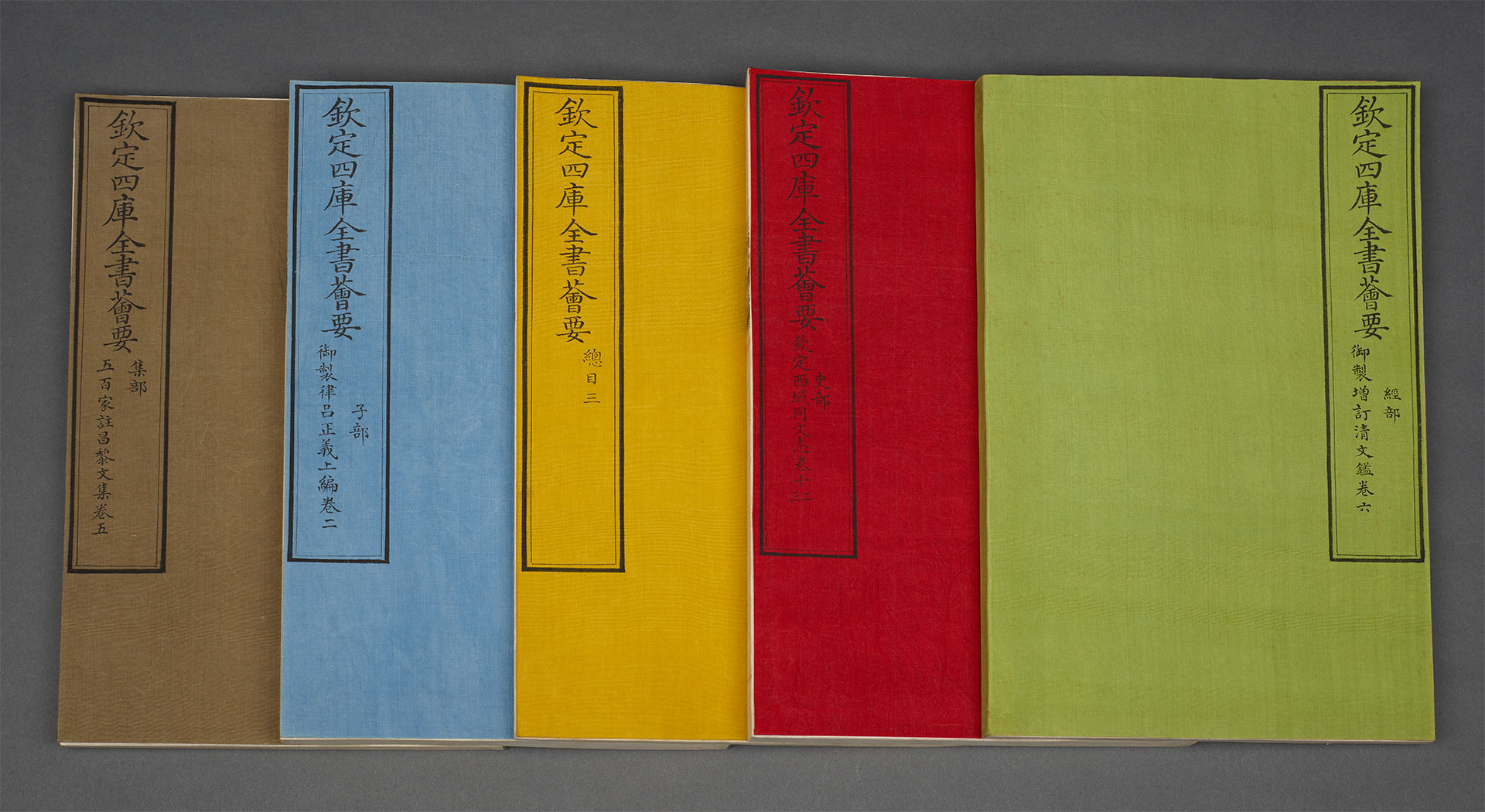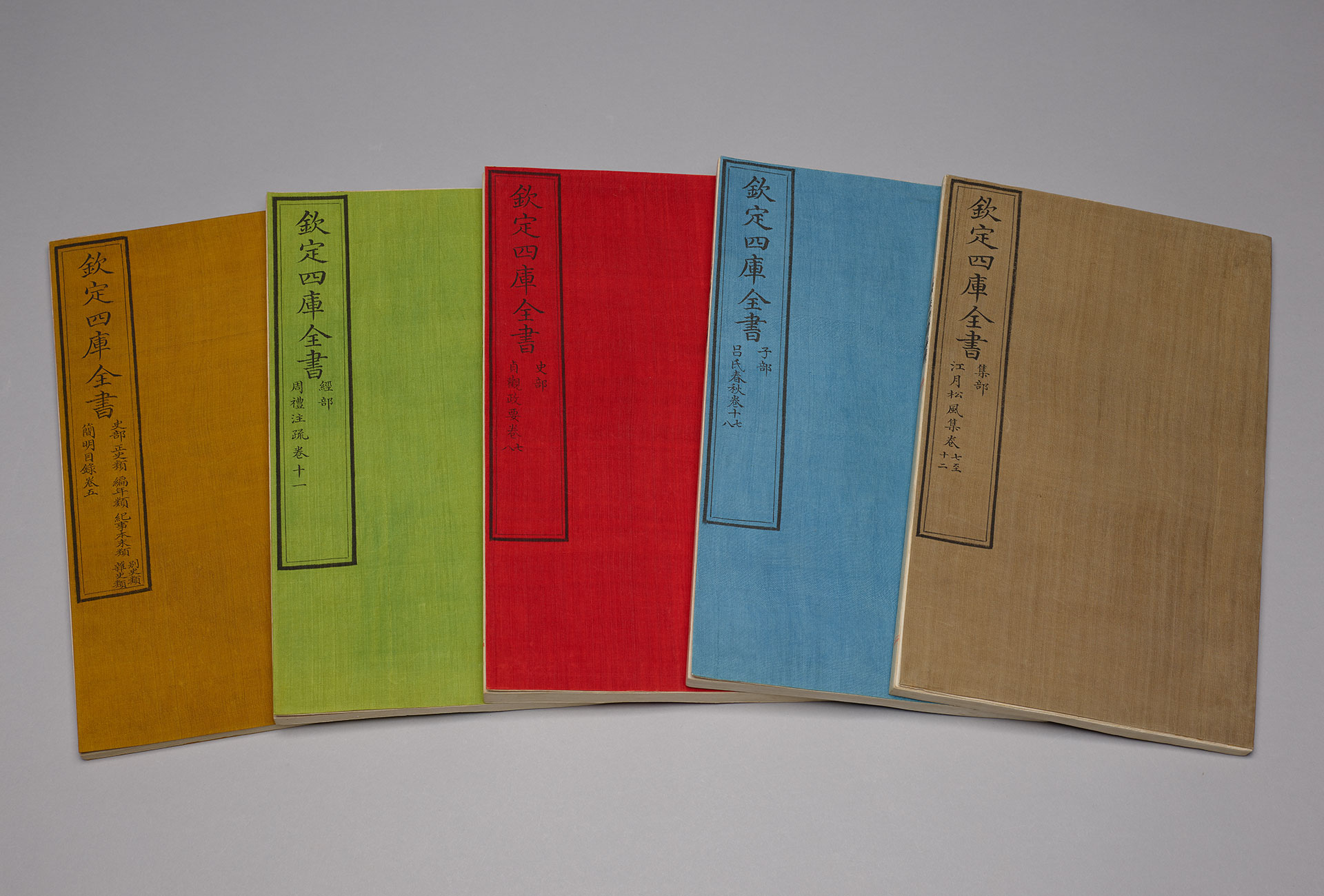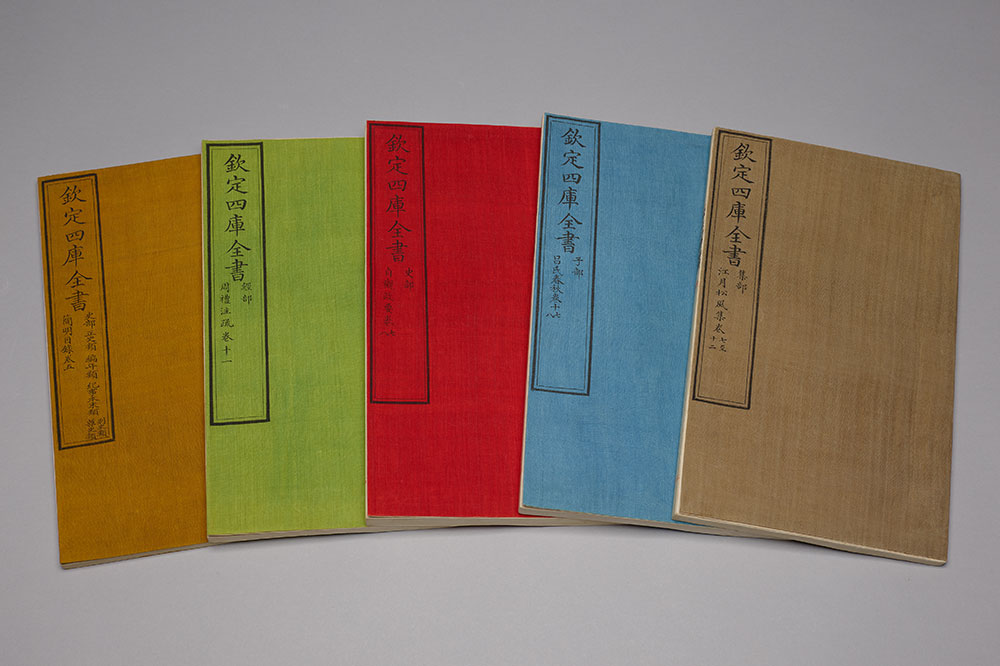Scholarly Orthodoxies
Exploring scholarly resources and promoting cultural buildup and learnedness was a mark of achievement for emperors in ancient China. During the reign of the Ming emperor Yongle (r. 1403-1424) the court compiled and issued important classics included Five Classics, Four Books and "Great Compendium", expressly stipulating that the Cheng-Zhu School of Neo-Confucianism was now the state orthodoxy on which civil service examinations would be based. The promulgation of Neo-Confucian thought also exerted far-reaching influences on scholarship in neighboring states in East Asia. In the early Qing dynasty, the court, attempting to consolidate political power, continued to uphold the philosophical teachings of Zhu Xi (1130-1200) and his followers as the correct and accepted substance of learning. On the other hand, it also started to engage in the systematic reorganization of the bodies of accumulated knowledge and the contents of books. The Ming and Qing courts, both made important academic efforts, the Yongle Dadian (Great Canon of the Yongle Reign) and the Siku Quanshu (Complete Library of the Four Treasuries). The former is a treasure trove of texts from all periods covering a massive variety of subjects; it is organized according to the rhyme group of the keywords. The latter, which follows the traditional mode of bibliographic classification, set a new paradigm for the Chinese knowledge system and scholarly criticism.
During imperial dynasties, government-led book searches, collections, or compilations/editing were often given various values in addition to cultural, knowledge, and academic values; and served as tools for rulers to legitimize their regimes and for scholars to acquire power.
In the early-Ming dynasty, the imperial government created a political ideology that honored the Cheng–Zhu school, resulting in scholars reading only the Five Classics, Confucius, and Mencius and only talking about the Lian, Luo, Guan, Min doctrines. During the Yongle era (1403-1424), the emperor decreed the Ministry of Rites to compile and edit the Great Compendia of the Five Classics, Great Compendia of the Four Books, and Great Compendium of Human Nature and Principle before introducing them to the public. Later, intellectuals had to follow a certain way of speaking, writing, and thinking. Song dynasty Confucianist Zhu Xi (1130-1200) and his pupils compiled the Outline and Details of the Comprehensive Mirror in Aid of Government, preaching orthodox thinking and a set of ideological and moral norms that supported the feudal system. The book became a must-read for rulers, ministers, officials, and scholars and a standard for the country to select talented people. As the "boundaries" of knowledge narrowed, novel thoughts dissipated.
Both the Collected Statutes of the Ming Dynasty and Outline and Details of the Comprehensive Mirror in Aid of Government were written using the Cabinet style and thick strokes, and were put together using wrapped-ridge binding. The book cover is apricot yellow in color and contains satin with flower motifs. Inside the book is the stamp "Treasure of Kuang-yun," retaining the typical appearance of Ming dynasty court furnishing books.
The Shunzhi Emperor inherited the tradition of the "six imperial edicts" from the Hongwu Emperor (Ming dynasty founding emperor; 1328-1398). Later, the Kangxi Emperor inherited such a tradition and expanded it to 16 edicts, teaching and educating the public. In 1724, the Yongzheng Emperor interpreted each and every one of the edicts, producing the Amplified Instructions on the Sacred Edict containing over 10,000 Chinese characters. Additionally, the emperor established a system of regular publicity among the public; said tradition continued until the end of the Qing dynasty and can be regarded as an important cultural phenomenon in said dynasty.
One of the Kangxi Emperor's imperial edicts reads "dismiss heresies to honor orthodox schools." The so-called "orthodox schools" emphasize inheriting the personal teachings of sages and passing down Confucianism and Taoism. However, the Yongzheng Emperor considered Buddhism, Taoism, and Western religions as heresies. Although the Kangxi Emperor promoted the Zhu School as an orthodox school, he also offered his new understanding of Zhu Xi's philosophies: in the re-edited Yuanjianzhai Studio Edition of Zhu Xi's Complete Works Compiled on Imperial Order, he prioritized Confucian philosophies, the Four Books, the Six Classics, human nature and principles, and orthodoxies over the traditional tai chi, ying, and yang. During the Kangxi era, many great books on the cultural traditions of the Han Chinese were compiled, and fundamental knowledge such as Chinese characters and phonology were created on a large scale. For example, the Kangxi Dictionary, which includes nearly 50,000 Chinese characters, is the first book titled "dictionary" in ancient Chinese history.
In the Qing dynasty imperial storehouse, very few books were printed on white paper, and most of them were used as court furnishings. The majority of the books were printed on yellow paper and used to reward ministers. Zhu Xi's Complete Works and the Kangxi Dictionary, both block printed on white four paper by the Kangxi imperial storehouse, are exquisite, in brand new condition, and wonderful to look at.
- Yuanjianzhai Yuzuan Zhuzi Quanshu (Yuanjianzhai Studio Edition of Zhu Xi's Complete Works Compiled on Imperial Order)
- Written by Zhu Xi, Song dynasty
Compiled on imperial order by Xiong Silü, Li Guangdi, et al., Qing dynasty - Imprint of the Wuying Palace, 53th year of the Kangxi reign (1714), Qing dynasty
- Written by Zhu Xi, Song dynasty
To organize the classics passed down from previous dynasties, in 1403, the Yongle Emperor (1360-1424; temple name "Taizong" and personal name "Zhu Di") decreed that Xie Jin (1369-1415), a Hanlin academician, edit The Great Complete Statutes based on Literary and Documentary Sources. Because the content of the first edition was too much to prepare by one person, the emperor ordered Yao Guangxiao (1335-1418) and Xie Jin to supervise and recompile it together. The work was completed in 1408 and titled the "Great Canon of the Yongle Reign." Containing approximately 400 million words and packed in 11,095 volumes, the Great Canon of the Yongle Reign contains 22,877 chapters and 60 chapters of notes and table of content. It adopts the style of "using words that rhymes to unify Chinese characters and using Chinese characters to tie events together," compiling major Chinese classics before the 14th century and making it an unprecedented encyclopedia system and a historical document database that collects all information and knowledge based on sounds. The Great Canon of the Yongle Reign inspired the Qianlong Emperor to compile/edit the Complete Library of the Four Treasuries. The original copy of the Great Canon of the Yongle Reign is now lost. The duplicate, rewritten between 1562 and 1567, were severely damaged and scattered after fires and wars. Today, only over 400 volumes remain in the world, and they are regarded as treasures by collectors.
During the time when the Ming dynasty ended and the Qing dynasty emerged, there were many Great Canons left in the Forbidden City. At the suggestion of his ministers, the Qianlong Emperor attempted to compile lost ancient books by using the Great Canons. Such an endeavor later developed into a comprehensive search for all missing books as well as the compilation and editing of the Complete Library of the Four Treasuries. The Qianlong Emperor repeatedly criticized the Great Canons for its inappropriate style, excessive materials, low personnel quality, and impure compilation motives, seemingly to challenge his ancestors. The Complete Library of the Four Treasuries, opened in 1773, brought together academic elites at the time. In January 1782, the Complete Library of the Four Treasuries in the Wenyuan Pavilion transcribed the completion of the decorations. The Complete Library of the Four Treasuries, divided into classics, history, masters, and collections, is the world's largest book series, encompasses the essence of ancient Chinese books of various fields, and includes scientific works written by Western missionaries. It comprehensively organized and built an academic system featuring traditional and contemporary characteristics, allowing it to possess historical significance, academic depth, artifact values, and prestige.
